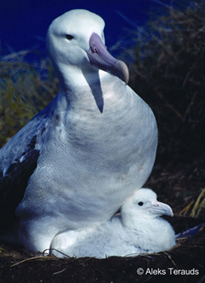Steven Candy and John van den Hoff, based at the Australian Antarctic Division, use historic Wandering Albatross Diomedea exulans chick-growth data from a South Atlantic breeding locality gathered in the 1960s by albatross pioneer, Lance Tickell to address the question above.
The authors consider that special emphasis should be placed on determining optimal sampling regimes to detect statistically significant differences in key indicators between populations for species with high conservation values, especially when invasive handling techniques are the only method of gathering data. In procellariiform nestlings one such key indicator is peak mass, which serves as a measure of parental investment and is an important factor for future survival.
They show that the most efficient regime for detecting a difference between populations or cohorts of Wanderer chicks was 15 birds sampled every third day.

Reference:
Candy, S.G. & van den Hoff, J. 2010. Optimal sampling regime for detecting significant differences in peak mass of chicks: a case study with the Wandering Albatross Diomedea exulans. Endangered Species Research 11: 167-173. http://www.int-res.com/articles/esr2010/11/n011p167.pdf.
John Cooper, ACAP Information Officer, 25 April 2010

 Français
Français  English
English  Español
Español